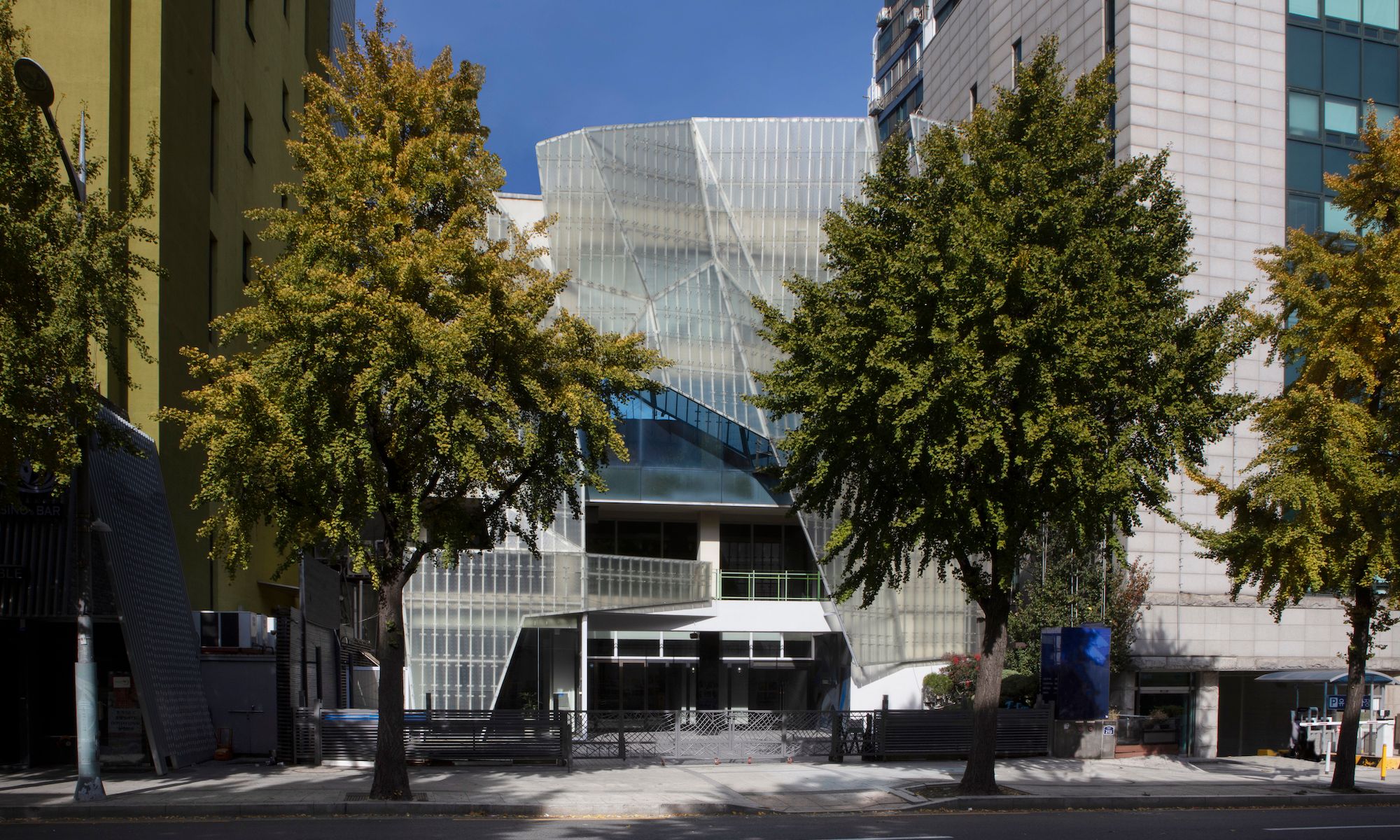The new Lehmann Maupin space at 213 Itaewon-ro, Yongsan-gu, Seoul Courtesy Lehmann Maupin, New York, Hong Kong, Seoul, and London
After four years in the Sogyeokdong neighbourhood of Seoul, Lehmann Maupin is moving to a larger gallery in the glamorous Hannam-dong area, home to a growing cohort of K-pop artists and movie stars as well as a crop of local and international galleries.
Designed by the award-winning firm, Society of Architecture, Lehmann Maupin’s two-storey gallery is due to open in early spring and will include an outdoor terrace to exhibit large-scale sculpture. The gallery will continue to be led by its senior director, Emma Son, who believes 2022 “will surely be Korea’s year on the international stage”.
It is no secret that Asian buyers are fueling mini-booms across many strands of the art market—from very fresh paintings to street art and NFTs—and Korean collectors represent a growing piece of the pie. Gallery co-founder Rachel Lehmann observes how Covid-19 has changed the demographic of gallery-goers in South Korea, with the older generation being more cautious about attending social events. “We have seen a growth in young collectors who’ve been behind their screens for the past 14 months, and they are now contributing to a real buzz in the art scene,” Lehmann says, noting that tastes are broad, encompassing Korean and international contemporary artists. “The biggest supporters of Korean artists are the Koreans,” she adds.
Nonetheless, it is an American artist, Lari Pittman, who will inaugurate the space with an exhibition of 15 new paintings titled Opaque, Translucent, Luminous—marking his first show in South Korea. Pittman’s primary market works typically sell for between $225,000 and $300,000, though secondary market works can command up to $700,000.
Rendering of the new Lehmann Maupin space at 213 Itaewon-ro, Yongsan-gu, Seoul
Courtesy Society of Architecture (SoA) and Lehmann Maupin, New York, Hong Kong, Seoul, and London
Lehmann Maupin launched its Seoul outpost in 2017, making it one of the first international galleries to establish a permanent space in South Korea. However, the gallery’s relationship with the country dates back much further, having represented Korean artists such as Do Ho Suh and Lee Bul since the late 1990s and early 2000s. Since then, there has been a proliferation of museums—both private and municipal—across different regions in the country.
Lehmann points to Daegu, which is the third largest city in South Korea after Seoul and Busan and home to a significant number of museums and galleries as well as boasting its own art fair. “There’s a great art community there,” she says. “The collectors are incredibly ambitious and the artists are super interesting.”
Interest in South Korea as an art hub, and one to potentially rival politically beleaguered Hong Kong, has certainly spiked recently. In the past six months alone, several international galleries have opened in Seoul including Berlin’s König Galerie, which opened a space in the luxury boutique MCM Haus in April, and the Austrian Thaddaeus Ropac gallery, which launched in October, also in the Hannam-dong district. The New York-based Gladstone Gallery has also announced that it plans to open an outpost in Seoul.
Further endorsement comes courtesy of Frieze, which is launching its first Asian fair in Seoul in September 2022. The event will coincide with the Korea International Art Fair (Kiaf), which has been a staple of the Seoul art world since 2002. Lehmann says she hears the Korean fair is expanding its footprint as well as launching a satellite in 2022. “So we are looking at more than twice as many galleries exhibiting in Seoul next September,” she says. But will the home-grown fair lose out to Frieze? Lehmann thinks not, though believes “a bit of competition often makes something better”.
Lehmann notes that one of the biggest benefits of doing business in South Korea in the current climate is the country’s quarantine rules. “If you have a business there, you don’t have to quarantine,” she says. “They’re very efficient. There’s a lot of paperwork, but you get tested right away.” Compare this with Hong Kong, where strict government Covid-19 rules are currently in place. Lehmann says her gallery’s lease in Hong Kong’s Pedder Building has expired and they are yet to find another space. “It’s a big issue, having to quarantine for three weeks when you travel to and from Hong Kong,” the dealer says, noting that she is unlikely to be travelling to Art Basel in Hong Kong for the second year running, though colleagues in the city will man the gallery’s booth.
“All of us want to be there, it’s just a matter of time,” Lehmann adds.

